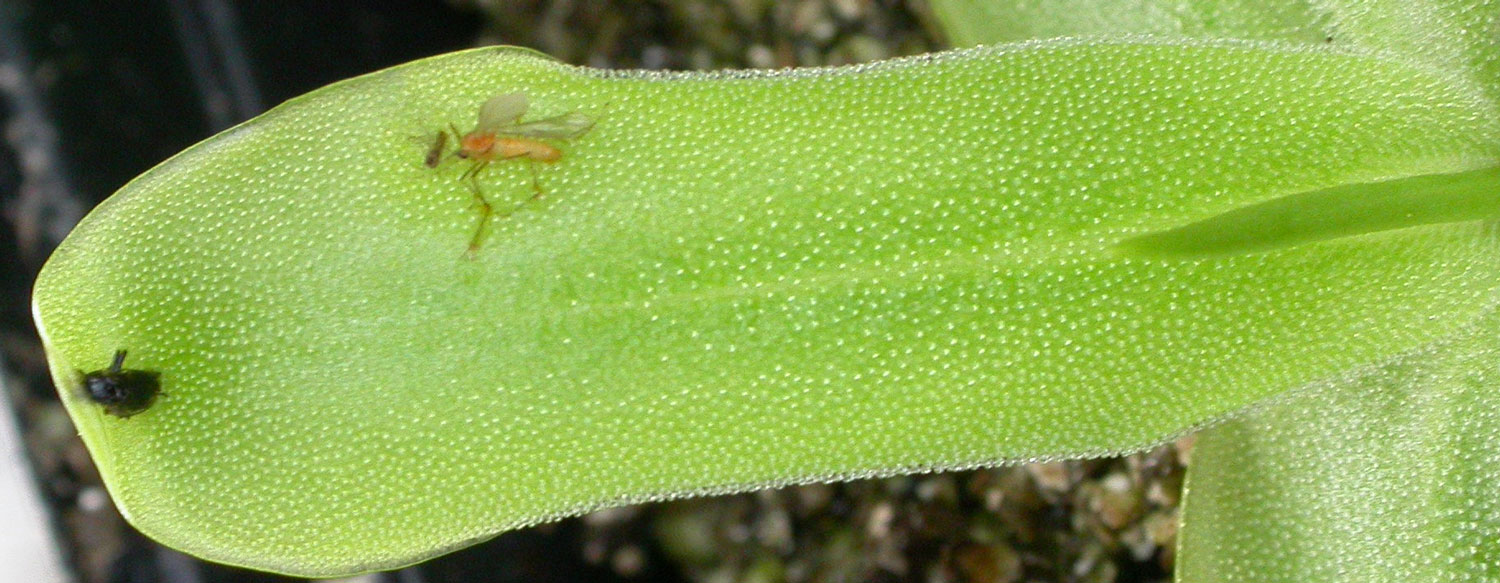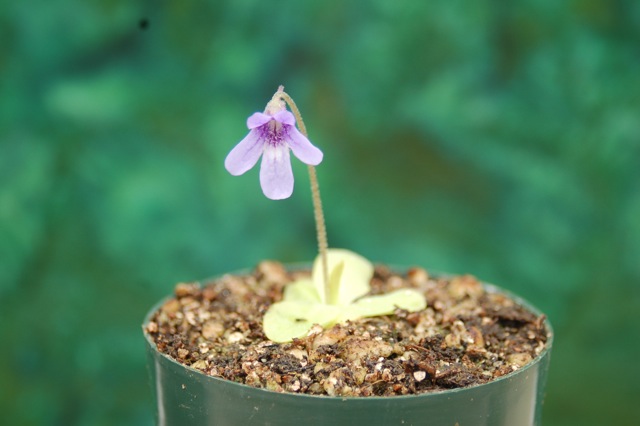Cold-Hardy Butterwort Care
Get the straight facts from the guys who have grown and propagated thousands of carnivorous plants every year since 1995.

Cold-hardy varieties of
Pinguicula, commonly called butterworts, are hard to find in cultivation,
likely because unlike Sarracenia, flytraps, or sundews, cold-hardy butterworts are more difficult
to propagate and slow to grow from seed. They are prized amongst collectors for their
lush rosettes and their orchid-like flowers.
If you’ve successfully grown Sarracenia and other outdoor carnivorous plants in the past,
you will enjoy tending to cold-hardyPinguicula. If you’re new to growing carnivorous plants,
you may want to gain some experience with others first. Read
The Ultimate Carnivorous Plant Guide for Beginners
to learn more about growing some of the easier and more common carnivorous plants in cultivation.


Range
Most cold-hardy butterworts in cultivation are native to the mountainous regions of Western Europe, but a handful come from the United States, Canada, and temperate East Asia.
Where to Grow
Cold-hardy butterworts
grow best outdoors as a container or potted plant on a sunny deck or patio. You may also grow them in a pond or fountain, but keep the crown of the plants above water. Because of their specific soil requirements, avoid planting them directly in the ground.
Sunlight
During the growing season, grow your sundew outside in dappled to full sun, depending on your summer heat. In areas where summer temperatures rarely exceed 85°F, cold-hardy butterworts can grow in full sun throughout the day. In areas where summers are hot, grow your plant in dappled sunlight. Avoid full shade, which will cause the plant to deteriorate.
Heat Tolerance
Cold hardy butterworts are mountainous plants, so cool nights are essential. If your summer nights are naturally cool, your plant will likely remain in active growth through the first frost of fall. If your summer nights are naturally warm, your plant will likely have a short growing season and go dormant by mid to late summer. In general, the warmer the summer, the shorter the growing season. You can moderate the ambient temperature by sheltering its pot amongst other potted plants, or by growing the plant near the base of a large
Sarracenia. If the growing season is short, your butterwort may be slightly stunted the following growing season. Large, vigorous plants are often found growing in mild maritime climates, such as on the coast of the Pacific Northwest.
Water
Butterworts require mineral-free water. If your tap water is relatively pure (less than 50 parts per million in dissolved minerals), then you can safely water your butterworts with it. Otherwise, use bottled distilled water. Keep the soil damp at all times. You can do this by setting the plant in small amounts of standing water, no more than 1/4 of the way up the pot. If you are growing your plant in a pond or fountain, remember to avoid drowning the crown of the plant.
Soil
Butterworts require nutrient-free soil that provides good drainage and aeration. Use a slightly sandy soil mixture of 1 part peat moss, 1 part perlite, and 1 part sand. Never use potting soil, compost or fertilizer; these ingredients will kill your plant.
Winter Care
Cold hardy butterworts require 3-4 months of winter dormancy triggered by cold temperatures (below 50°F or 10°C) and shorter daylight hours. As your plants enter dormancy, they will drop their leaves and stop growing altogether. While dormant, your plants can withstand overnight frosts down to 20°F (-7°C). As long as temperatures rise above freezing during the day, you don't need to protect them. However, even while dormant, plants will still need to sit in a small amount of standing water to prevent its soil from drying out.
If you live in zones 7 and 8, pay attention to weather alerts. If weather forecasts predict the daytime temperature will remain below freezing for more than a couple of days, you will need to protect your plants from frost burn, a type of dehydration that occurs during prolonged freezes. Cover your plants with a tarp (or move them to an unheated enclosure). When the daytime temperature rises above freezing, you may uncover your plants and allow it to continue its dormancy as usual.
If you live in zones 6 or colder, areas where the temperature routinely drops below freezing for more than a week at a time, you will need to mulch your container plants for the winter. Maintain soil moisture whenever the temperature rises above freezing. Uncover your plants in early spring.
THE ULTIMATE CARNIVOROUS PLANT GUIDE FOR BEGINNERS
In this downloadable ebook, Jacob Farin, co-owner of Sarracenia Northwest, will show you how to think like a professional carnivorous plant grower and keep your first carnivorous plant alive and healthy. You will learn:
- how sunlight and water affect plant growth.
- what type of soil and pots to use.
- if you really need to shelter your plants from snow and ice.
- how to troubleshoot common plant problems.
If you are new to carnivorous plants or have struggled to keep them alive, this ebook is for you. Download your copy today!
